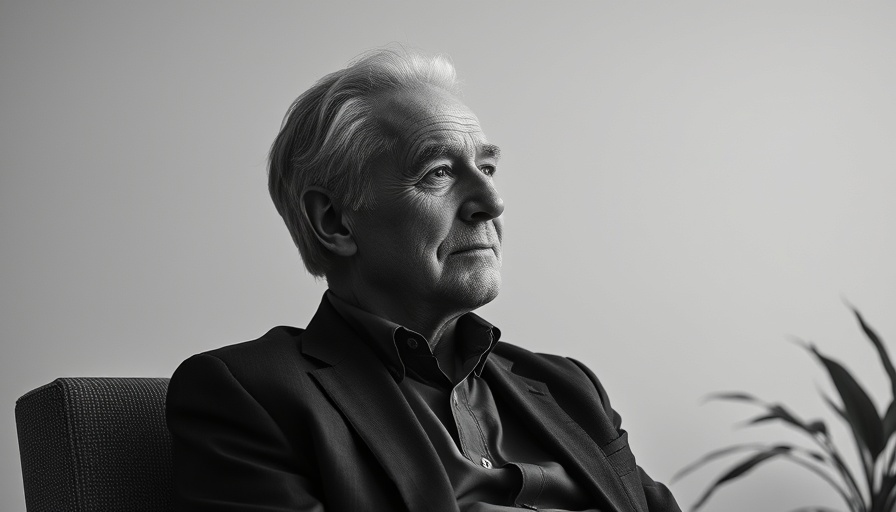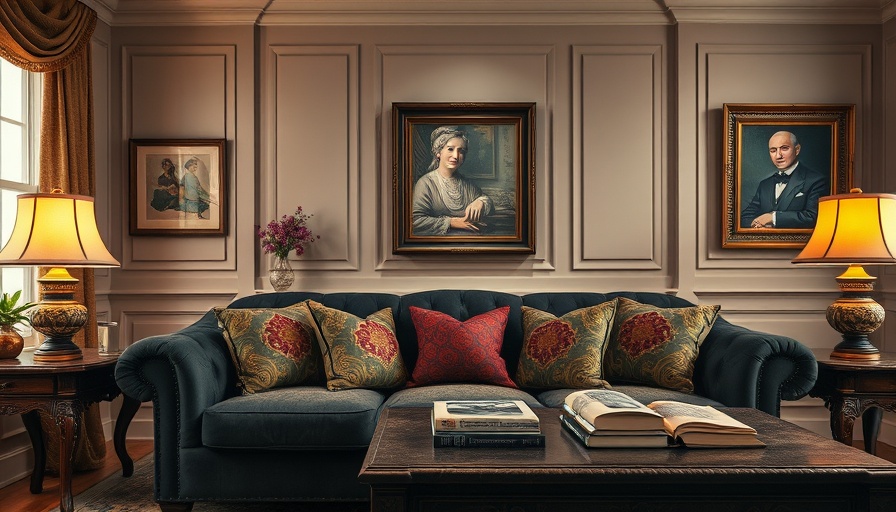
Exploring the Life and Legacy of Frank Lloyd Wright
Frank Lloyd Wright, a name synonymous with American architecture, left an indelible mark on the world with his visionary designs. Born in 1867, Wright revolutionized the way homes and buildings are conceived, marrying the natural environment with human habitation. His philosophy of organic architecture sought to create structures that complemented their surroundings, which anticipated today’s growing focus on sustainability.
Finding Beauty in Functionality: Wright's Architectural Philosophy
Wright’s designs often expressed a profound respect for nature, exemplified by his most famous work, Fallingwater. Located in Pennsylvania, this home not only demonstrates his architectural prowess but serves as a museum that invites visitors to appreciate a seamless blend of structure and landscape. With cantilevered terraces that overhang a waterfall, Fallingwater is a testament to Wright’s belief that architecture should enhance the beauty of natural surroundings.
What Makes Frank Lloyd Wright’s Homes Stand Out?
Wright's commitment to creating an “indigenous American architecture” resulted in the well-known Prairie Style, characterized by horizontal lines that echo the flat landscapes of the American Midwest. He sought to design homes that were both affordable and beautiful, particularly during the Great Depression with his Usonian homes, which aimed at providing quality housing for the masses without excess ornamentation.
The Influence on Modern Architecture
Today, Wright's influence can be seen in countless architectural movements and individual projects around the world. His emphasis on respecting the environment and designing spaces that foster community resonate deeply with contemporary architects. For example, homes featuring open floor plans and large windows are a crown jewel of Wright's innovative design principles. These features not only promote a connection with nature but also a sense of community within family spaces.
Spotlight on Iconic Homes Designed by Wright
Several of Wright's homes stand out for their historical significance and architectural innovation:
- The James A. Charnley House: Located in Chicago, this home combines the talents of Wright and his mentor, Louis Sullivan. It stands as a hallmark of collaborative creativity in early 20th-century architecture.
- The J.J. Walser Jr. House: Recognized for its experimental residential design, this house is currently facing challenges of preservation due to financial hardships but showcases Wright's early efforts toward affordable housing.
- The Warren McArthur House: This unique structure emphasizes horizontal lines and natural materials, encapsulating Wright’s signature style.
Understanding Wright's Impact on Home Maintenance and DIY Projects
Wright’s architectural philosophy extends beyond aesthetics. Homes designed by him are often straightforward in their construction, which can empower DIY enthusiasts and handymen alike to maintain these beautiful structures. On the practical side, following Wright’s principles, homeowners can embrace a DIY approach to home repairs.
His designs also emphasize practical challenges that align with today’s home maintenance needs. By utilizing natural materials and elements, homeowners can undertake simple repairs and upgrades that respect the integrity of the original design while ensuring lasting beauty. For instance, maintaining the natural wood finishes seen in many of Wright's homes is achievable with the right DIY maintenance tips.
Fostering an Appreciation for Sustainability and Craftsmanship
By engaging with Wright’s work, today's homeowners can learn to develop a mindset that appreciates craftsmanship and sustainability. Investing in quality repairs not only enhances the value of an individual home, but also contributes to the broader mission of sustainability that Wright pioneered.
Conclusion: Your Journey into Frank Lloyd Wright’s World Awaits
The homes of Frank Lloyd Wright offer a gateway into the principles of modern architecture and design. By exploring these remarkable structures, one can appreciate not just their beauty but also their intended harmony with nature and community. Whether you are an architecture lover, a DIY enthusiast, or simply someone looking to enrich your living space, the legacy of Frank Lloyd Wright provides timeless inspiration.
 Add Row
Add Row  Add
Add 



Write A Comment